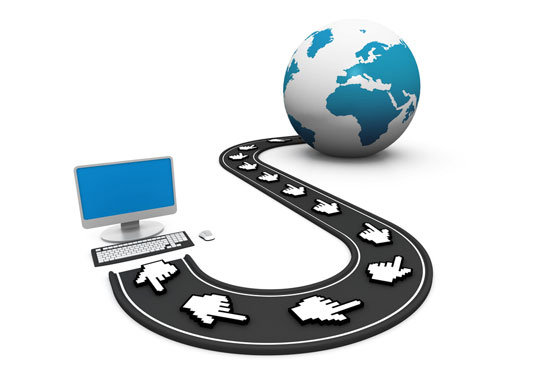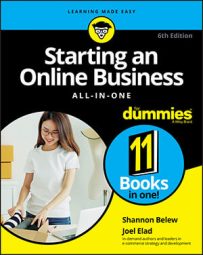 ©hywards/Shutterstock.com
©hywards/Shutterstock.comUltimately, you want that traffic flow or “visitor pathway” to result with an action — making a purchase, requesting a quote, watching a video, downloading a white paper, registering for a webinar … the list of actions is nearly endless and totally dependent upon what you want your visitor to do.
In the past (and we mean years ago, when businesses first started getting online), websites had a very simple structure. There were usually three to five main sections of a site (Homepage, About Us, Products, Services, Contact Us) with few total pages — usually less than a dozen. Today, websites, especially e-commerce sites, can have hundreds of pages, or more.
There are also lots of different ways people can find or enter your site — directly (by typing your domain name in a web browser), through a link in social media, by responding to an online ad from Google Ads, in response to a call to action in a video on YouTube, or through organic search (because they’re searching for information or products and your site shows up in search results). Not to mention, new visitors can start their experiences with your site from your home page or from any other page in your website (this is considered a landing page because visitors “land” on it first).Let’s start by defining exactly what we mean by website goals and conversions. A “goal” is an end result you want to achieve, and it must be specific and measurable. You might have a goal to increase traffic to a particular product page on your website by 20 percent over the previous 30 days and have a bounce rate (whether or not visitors immediately leave or bounce off that page) of 40 percent or less. A “conversion” is the completion of an action, such as clicking a call-to-action button or actually buying a product.
We sometimes talk about conversion rates to determine how successful an online offer is on a particular page. One way to calculate the rate is by dividing the number of clicks on a call-to-action button by the number of visitors on the page over a certain period of time. A Buy Now button on a product page may have a 2 percent conversion rate, for example.
Before you can map out how you want traffic to flow through your website, you need to define the goals and conversion points for each page of your website. And all these decisions are critical to successful website design! Obviously, you cannot physically control what actions website visitors take and which pages they view, or in which order. However, knowing the goal of a specific page helps you determine which calls to action you need on the page, and further helps you determine what type of content you need on that page. The figure shows an example of a visitor pathway based on goals and conversions. Guide the traffic flow through your site based on defined goals and conversion points.
Guide the traffic flow through your site based on defined goals and conversion points.Use the information from the profitability plan you create to determine what type of conversions you need on each page. This ensures you are directing visitors to click on offers that help generate the highest possible revenue for your online business.
Each page of your website should have a goal associated with it. What is the purpose of the page? What do you want visitors to do when they are on that page? Where do you want visitors to go next? For example, the goal may be for visitors to read information about a common problem they may be having and learn more (which could be measurable by the bounce rate and time spent on the page). The conversion point may be to click a link within the text to a product or service page that solves the common problem they just read about; or it might be to watch a video for more detailed information. Knowing the goal for each page also helps you determine the most appropriate conversion points on the page. (Yes, you can have more than one conversion point!)Once you have goals, conversions, and visitor flow mapped out, you have a good starting point to determine your site’s structure.

